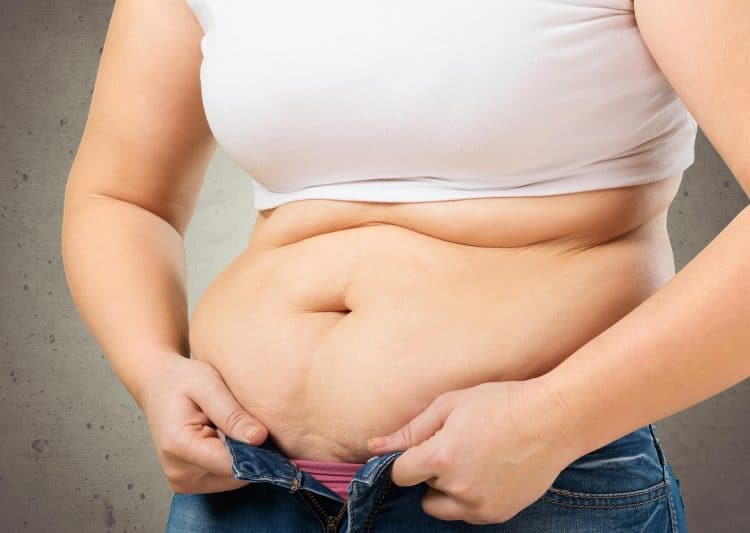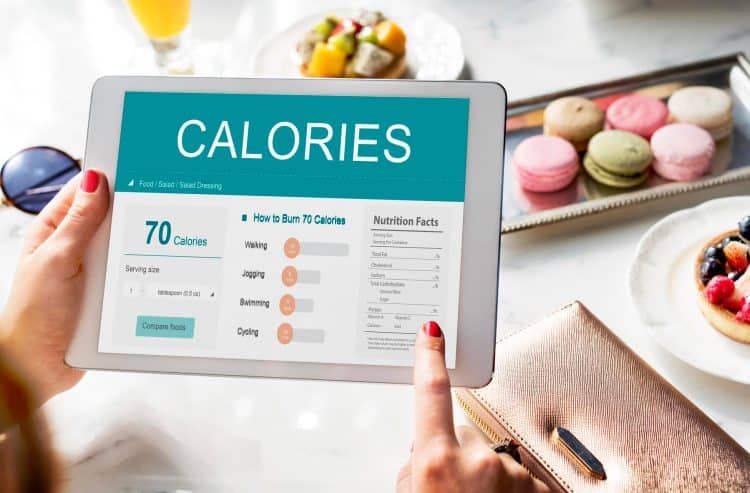Losing fat can be a slow and frustrating process. No matter the diet or exercise routine, results often can’t come quickly enough. As a fitness expert with over 30 years of experience, including as a PT and ex-Marine, I understand this challenge well. It’s even harder to target fat loss in specific areas, such as the lower abs or thighs, due to the myth of spot reduction.
That’s not to say you can’t lose fat from your upper body. It’s just that you’ll need to lose it from the rest of your body at the same time. Sadly, when it comes to losing fat, you cannot target just your upper body.
That said, most people need to lose fat from all over, even if they mostly care about one particular body part. Lowering your overall body fat percentage will have the most significant possible impact on how you look, feel, and perform.
In this guide, we reveal the exercise, diet, and lifestyle strategies you need to use to lose fat from your upper body, midsection, and legs.
What Causes Upper Body Fat
Body fat, or, more scientifically, adipose tissue, is caused by several factors, including diet, lifestyle, and physical activity. But, in simple terms, you gain body fat when you consume more calories than you burn. This is called a calorie or energy surplus.
Level Up Your Fitness: Join our 💪 strong community in Fitness Volt Newsletter. Get daily inspiration, expert-backed workouts, nutrition tips, the latest in strength sports, and the support you need to reach your goals. Subscribe for free!
It’s estimated that a pound of body fat is equal to 3,500 calories, so if you eat 500 more calories than you need per day, you’ll gain about one pound of fat per week (seven days x 500 calories = 3,500/one pound).
Now, it’s important to understand that thermodynamics seldom works this precisely, and things like the rate of calorie storage vs. intake vary from person to person. However, it’s unequivocal that overeating, consuming too much junk food, and/or being too sedentary will lead to body fat accumulation and weight gain. High stress levels, too little sleep, certain medications, and genetics can also increase the risk of weight and fat gain.
As previously mentioned, your body stores fat globally, i.e., all over. Some people store more fat in their upper bodies, while others accumulate it in their abdomens or legs. Fat deposition is primarily the result of genetics and, as such, is something you cannot control or change.
The good news is that no matter where your body stores fat, you can eliminate it with diet and exercise. It might not go from where you want initially. But stick to your fat loss plan, and eventually, it’ll go from the places you want to lose it.
Fat Loss Basics
The best way to lose fat and keep it off is to make exercise and healthy eating habitual. Taking positive daily action for many weeks and months will produce better results than crash diets and extreme workout plans that only last a few days.
While workouts that promise to burn 1000 calories can lead to weight loss, the chances are that you won’t be able to maintain such an intense training program for long. The same is true for crash diets, where you only eat a few hundred calories a day. Hunger and cravings are inevitable, and it won’t be long until you cheat or quit your diet.
As such, it’s generally best to adopt a more moderate and enjoyable exercise program and combine it with a sensible diet.
So, forget about things like trying to lose 30 pounds in 30 days and, instead, settle in for the long haul and plan on losing 1-2 pounds a week. This will be far more enjoyable and sustainable, and your chances of success will be exponentially higher.
There are three key components to losing weight and keeping it off – all of which are outlined below.
1. Create a Calorie Deficit
Body fat is stored energy, and the only way to burn that energy is to create a calorie deficit. This means reducing your food intake to below maintenance level. For example, if you need to eat 2,500 calories to maintain your current weight, eating 2,000 would create a 500-calorie deficit. This will force your body to start burning fat for fuel.
It’s generally recommended that you should avoid reducing your calorie intake more than 1000 calories below maintenance. In fact, most people should aim for a 500-calorie-per-day deficit.
There are several ways to create a calorie deficit, including:
- Eating smaller meals
- Eating fewer meals or missing meals entirely, i.e., intermittent fasting
- Eating less fat and fewer high-fat foods
- Eliminating certain foods or food groups, e.g., cutting out junk food or carbs
- Cutting out alcohol
- Replacing high-calorie foods and meals with lower-calorie alternatives
However, any interventions MUST be sustainable. There is no point in starving yourself for a week only to overeat the next. Instead, whatever changes you make must stick, so you can continue doing them for as long as it takes to reach your goal weight or body fat percentage.
In terms of what you should eat to lose fat, this actually isn’t all that important, provided you reduce your calorie intake. However, weight loss is invariably easier when you eat natural, wholesome foods as they tend to be more filling and lower in calories than processed and junk foods.
For example, a typical small cookie contains 60 calories, whereas an apple also has about 60 calories. Needless to say, one cookie is never enough, but very few people feel like eating more than one apple.
Nutrient and fiber-rich foods digest more slowly and help keep you feeling fuller for longer. They also release their energy more smoothly, so you should experience fewer energy dips and cravings. They’re healthier, too, and a healthy body is better at burning fat.
The final thing to remember is that food is one of life’s great pleasures, so you should enjoy what you eat. If you hate your meals or they make you feel unwell, you have a readymade excuse for quitting your diet. Make sure you are comfortable with your dietary interventions, so you can stick with them for as long as necessary.
Use this calculator to determine your ideal calorie deficit for weight loss.
2. Develop A Sustainable Workout Routine
Cutting calories from your diet is only one way to create a caloric deficit. Exercise and general physical activity can also help you to go “overdrawn at the calorie bank.”
Firstly, let’s talk about exercise…
While it is possible to lose weight and burn fat without exercise, it’s much easier with it. In fact, numerous studies suggest that exercise plus diet is much more effective for weight loss than diet or exercise alone [1]. It’s a case of one plus one equals three!
Exercise serves several purposes for fat-burning and weight loss:
Increased caloric expenditure
All types of exercise burn calories at an accelerated rate. Exercising several times per week means you’ll create a more significant weekly calorie deficit. The bigger the calorie debt, the more fat you’ll burn and weight you’ll lose.
For example, let’s say you adjust your diet and create a 500-calorie-per-day deficit, which leads to a one pound per week weight loss. However, you also exercise four times a week, burning an additional 2,000 calories (a not unreasonable 500 calories per workout).
This adds up to a deficit of 5,500 calories, or about 1.57 pounds. Needless to say, this is a significant improvement over what can be achieved with diet alone.
Preservation of muscle mass and resting metabolism
It’s common to lose a little muscle as you lose fat. This causes a reduction in your basal metabolic rate, which is the number of calories you expend during 24 hours at rest. The last thing you want is to burn fewer calories, as doing so will make weight loss even slower.
Exercise, especially strength training, helps preserve muscle mass, reducing the risk of any metabolic slowdown.
This is because your body operates on a system of “use it or lose it.” By engaging in activities that challenge your muscles, your body is less likely to allow them to waste away, knowing it will need them for future workouts.
In addition, losing fat and muscle together can leave you skinny fat. Sure, you’ll be slimmer, but your body will be soft and weak. You’ll look good in clothes, but much less so in your bathing suit.
For this reason, exercisers who want to lose fat should engage in cardio AND strength training for best results.
Focus on your problem areas
While there are no specific exercises or workouts that target upper body fat – spot reduction being a fitness myth – that doesn’t mean that upper body training is a waste of time.
In contrast, it can be very valuable.
Upper body strength training lets you focus on any weak, soft muscles you want to tone up. You may even want to increase muscle size. Developing your upper body means that, as the fat starts to come off, what’s left will look healthy and athletic.
You can work on your chest, shoulders, upper back, core, and arms with strength training. However, don’t neglect your legs, as lower-body training burns more calories and is just as important as your upper body.
Increased dietary latitude
Eating less is one of the most important things you can do for weight loss. However, relying solely on a diet means you’ll have to be very strict with what you do and don’t eat. You may even have to reduce your caloric intake so much that you often feel hungry.
While being hungry is expected on a weight-loss diet, it can wear you down and eat away at your willpower, making it harder to maintain your reduced-calorie diet.
Adding exercise into the mix means you won’t have to slash your food intake so aggressively. You can eat a little more and still lose weight. You can even increase your exercise volume so you can enjoy eating foods that might otherwise derail your progress.
That’s not to say exercise gives you a license to cheat on your diet. However, it does earn you a little more latitude, so you can afford to relax from time to time.
Level Up Your Fitness: Join our 💪 strong community in Fitness Volt Newsletter. Get daily inspiration, expert-backed workouts, nutrition tips, the latest in strength sports, and the support you need to reach your goals. Subscribe for free!
In terms of how much and what type of exercise you should do, that’s up for debate. Some people swear by cardio, while others are fans of strength training. Some experts say you must exercise daily, while others recommend just 3-4 weekly workouts.
Ultimately, it’s up to you to choose activities you enjoy and a training frequency you can stick to. For example, if you only have time for three workouts a week, then that will have to suffice. But if you enjoy working out daily, then by all means, do so.
However, combining strength training with cardio is probably the best approach for most exercisers.
3. Lifestyle Factors
While the food you eat and your workouts will probably have the biggest impact on your weight loss and fat-burning success, certain aspects of your lifestyle can also be very influential.
Avoid sabotaging your hard work in the gym and the kitchen by paying attention to the following lifestyle factors:
Sleep
Poor sleep is often linked to weight gain and difficulty losing weight [2]. Not getting the recommended 7-9 hours of sleep per night can rob you of the energy you need to work out, lower your motivation and willpower, increase hunger levels, prime your body for fat storage rather than fat burning, increase cravings, and interfere with blood glucose and insulin levels.
Many people view sleep as a luxury when, in reality, it’s one of the best things you can do for your fitness and mental and physical health. Getting more sleep is usually a matter of going to bed earlier.
You can read more about the importance of sleep for fat loss and muscle gain here.
Stress
Stress is part and parcel of modern life, but too much can lead to weight gain and make fat loss harder than it needs to be. Prolonged stress causes a chronic increase in cortisol levels, a hormone that causes muscle breakdown. Losing muscle lowers your basal metabolic rate and, therefore, your fat-burning potential.
Stress also causes a rise in blood glucose, essentially putting the brakes on fat burning and priming your body for fat storage.
Constant stress also reduces your energy and willpower, and who hasn’t eaten junk food or drunk alcohol in response to stress?
Needless to say, lowering your stress levels can help make losing weight easier. Ways to reduce your stress levels include:
- Guided meditations
- Breathing exercises
- Spending time in nature
- Reading
- Warm baths
- Moderate exercise
- Avoiding perfectionism
- Better time management
- Learning to delegate
- Having a morning routine
- Cutting down on caffeine and alcohol
- Getting enough sleep
Physical activity
Exercise is only one way to burn more calories per day. Non-exercise physical activity (NEPA) also increases your daily caloric expenditure.
Many people are largely sedentary. Even if you exercise five hours a week if you have an office job, drive to and from work, enjoy passive hobbies, and don’t have kids or pets, you may not do enough physical activity to lose weight.
More and more of us earn a living in front of a computer screen. We drive to and from work, get our food delivered, watch TV to relax, and play our sports on game consoles. It’s easy to go several days without doing any meaningful physical activity.
Needless to say, this makes it much harder to lose weight and burn fat.
So, look for ways to inject your life with more movement. Anything that gets you up off your butt and moving your body will increase your caloric expenditure. Examples include:
- Walking, running and cycling for transport or leisure
- Playing with your kids
- Gardening
- Chopping wood
- Shoveling snow
- Sweeping your drive
- Washing your car by hand
- Carrying shopping bags
- Recreational sports
- Doing household chores
None of these activities are particularly tiring, so you should have no problem doing plenty of them each day. In fact, if you do enough NEPA, your need for exercise is significantly lower. In fact, you could burn an additional 1000 calories a day just by staying busy:
| Activity | Duration | Calories burned (male) | Calories burned (female) |
| Cleaning gutters | 30 minutes | 174–249 | 108–198 |
| Cleaning or sweeping | 1 hour | 156–228 | 126–80 |
| Moderate walking | 60 minutes | 348–498 | 276–396 |
| Shoveling snow | 30 minutes | 183–264 | 147–210 |
| Washing dishes | 30 minutes | 87–126 | 69–90 |
| Total | 3.5 hours | 948–1,365 | 726–1,074 |
Try setting the alarm on your watch to sound every hour or so to remind you to get up and move. Even a few minutes will help, and done often enough could add up to several hours of calorie-burning non-exercise physical activity each day.
How to Lose Upper Body Fat – FAQs
Do you have a question about losing upper body fat or weight loss in general? No problem, because we’ve got the answers!
1. What are the best exercises for burning upper body fat?
Sadly, because spot reduction is a fitness myth, there are no exercises you can do that preferentially burn upper body fat. Fat accumulates globally and is used for fuel in much the same way.
There is no way to predict or influence which body fat stores your body will use first. Some people lose fat from their abdomen first, while others may lose it from their hips and thighs. This is genetic and determined by your hormones.
So, work out and diet for general fat loss, and eventually, that fat will come from your upper body, but this may not happen when or as soon as you want it to.
2. Which diet is better – keto, intermittent fasting, or paleo?

Any diet that puts you into a caloric deficit will lead to fat loss, and there are a lot of different diets to choose from. While it’s generally best to avoid very low-calorie crash or fad diets, as they can be impossible to stick to, almost any diet will work, including the aforementioned keto, IF, and paleo.
The key to dietary success is picking a plan you can live with. Not for a week or a month but for as long as it takes to reach your target weight or body fat percentage. So, do some research and see which diet resonates with you.
For example, if you don’t like eating lots of protein and fat, keto is not the plan for you. Similarly, if you like eating three meals plus snacks per day, you’re probably going to hate intermittent fasting.
Alternatively, instead of following an off-the-peg diet, you could create your own healthy eating plan. Check out this guide to find out how.
3. How long does it take to lose upper body fat?
The rate at which you’ll lose fat depends on how much exercise you do and how large your caloric deficit is. For example, if you create a 500-calorie-per-day deficit, you should lose about one pound of fat per week. But, if you double that to 1000 calories per day, you could lose as much as two pounds per week.
However, more significant deficits are usually harder to maintain. Hunger can grind down your willpower and cause you to cheat on your diet. That’s why most experts recommend losing between 1-2 pounds per week.
While this might not sound like a lot, it’ll add up over time, and your progress will be more sustainable. When it comes to losing weight and keeping it off, slow and steady is generally best.
4. Which is better for fat loss – steady-pace cardio or high-intensity interval training?
Broadly speaking, there are two types of cardio – low-intensity steady state (LISS) and high-intensity interval training (HIIT). It’s often said that HIIT is better for fat loss, but this is not necessarily the case.
HIIT workouts burn more calories per minute than LISS, but they tend to be shorter, too. Also, because they’re so darn hard, you may not be able to do them every day.
In contrast, LISS burns fewer calories per minute, but you can go for a long time and potentially do them more often. As such, you may be able to burn more calories using LISS than HIIT.
Ultimately, both workouts can help you lose fat, so try them both and see which you prefer. Alternatively, do HIIT one day and LISS the next to enjoy all the benefits these two different workouts have to offer.
Read more about LISS vs. HIIT cardio here.
5. How can walking help me lose weight?
Walking is arguably one of the easiest ways to accelerate fat loss. It’s low intensity, so you can do lots of it, and it won’t tire you out or take anything away from your more strenuous workouts. In fact, walking can speed up your recovery by increasing general blood flow and flushing away exercise waste and byproducts.
But how much should you do to lose weight? There are a couple of ways to answer this question.
Firstly, you could choose a specific number of calories you want to burn and then determine how much walking you need to hit that goal. Use this calculator to estimate your walking needs.
Alternatively, you could clock up a certain number of steps each day, e.g., 7000, and then see how much weight you’ve lost at the end of the week. Not losing weight fast enough? Increase your step count by 15-20%. Most people can get good results by walking 10-15,000 steps a day.
Related: How to Walk for Fitness and Fat Loss
Finally, you could try incorporating rucking into your workouts. Rucking is walking with a weighted backpack and is arguably the best way to walk for fat loss. You can read more about rucking here.
Regardless, when it comes to deciding how much walking to do for faster fat loss, the answer is usually “do more.” You’ve got nothing to lose but fat.
Related:
- How To Lose 5 Pounds in a Month
- How to Burn 1000 Calories A Day
- How to Burn 400 Calories a Day
- Fat vs. Muscle Weight: How to Tell the Difference
- How To Lose 1 Pound a Day
- How To Lose 15 Pounds in a Month
- Losing 50 Pounds in 6 Months
- How to Lose 10 Pounds in a Week
- Weight Management 101: How to Calculate Macros
How to Lose Upper Body Fat – Closing Thoughts
Sadly, there is no diet, exercise, or workout that preferentially targets upper body fat. Spot reduction is a myth. If spot reduction worked, everyone who did lots of abs training would have a rock-hard ultra-defined six-pack. You only need to look in the abs class at your local gym to see that isn’t the case!
So, instead of trying to burn fat from your upper body, train your body as a single, cohesive unit, and lose it from all over. Combine cardio and strength training with a sensible diet, and you WILL lose fat.
Be patient, let your body do its thing, and eventually, you’ll lose that upper body fat and the fat around your hips, thighs, and abs, too.
References:
- Joseph G, Arviv-Eliashiv R, Tesler R. A comparison of diet versus diet + exercise programs for health improvement in middle-aged, overweight women. Women’s Health (Lond). 2020 Jan-Dec;16:1745506520932372. doi: 10.1177/1745506520932372. PMID: 32597335; PMCID: PMC7325539.
- Papatriantafyllou E, Efthymiou D, Zoumbaneas E, Popescu CA, Vassilopoulou E. Sleep Deprivation: Effects on Weight Loss and Weight Loss Maintenance. Nutrients. 2022 Apr 8;14(8):1549. doi: 10.3390/nu14081549. PMID: 35458110; PMCID: PMC9031614.














